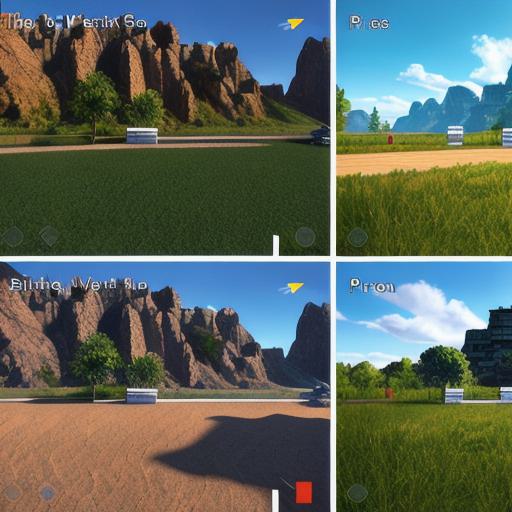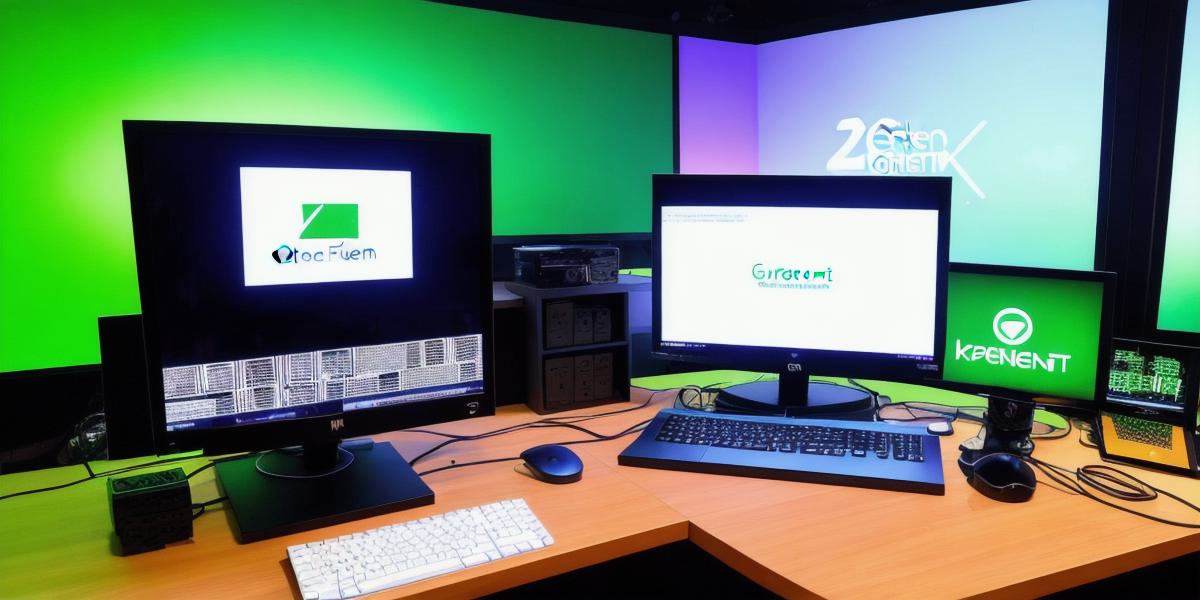In today’s digital age, video games have become an integral part of our lives, providing entertainment, education, and even therapy to millions of people worldwide. As a result, game development has emerged as a lucrative industry with immense growth potential. However, game development is a complex process that requires a range of technical and creative skills, making it challenging for beginners to get started. In this comprehensive guide, we will explore the key aspects of game development, from the basics to advanced concepts, and provide practical tips and strategies to help you succeed in this exciting field.
- Introduction to Game Development
Before diving into the intricacies of game development, it’s important to understand what it entails and why it’s such a popular career choice. Game development involves creating video games from scratch, using various software tools and techniques to design, develop, test, and release the final product. The process can be broken down into several stages, including conceptualization, prototyping, game mechanics, art and animation, programming, testing, and deployment.
The game development industry is diverse, with roles ranging from game designers, programmers, artists, sound designers, to project managers, and producers. Each role requires unique skills and responsibilities, but they all work together to create a cohesive and engaging game experience. The industry also offers numerous opportunities for collaboration, innovation, and growth, making it an attractive field for both beginners and experienced professionals.
- Understanding the Different Types of Games
The world of video games is vast and varied, with countless genres and sub-genres to choose from. Some of the most popular types of games include action, adventure, sports, strategy, role-playing, simulation, puzzle, and educational games. Each type of game has its own unique challenges and requirements, but they all share a common goal: to provide an immersive and engaging experience for the player.
To master game development, it’s essential to have a solid understanding of the different types of games and their underlying mechanics. This knowledge will help you identify your areas of interest and specialize in a particular field, whether it’s game design, programming, or art and animation. It will also enable you to work effectively with other members of the development team, as you’ll be able to communicate your ideas and contribute to the project more effectively.
- The Role of Game Design in Game Development
Game design is one of the most critical aspects of game development, as it sets the foundation for the entire project. It involves creating a concept for the game, defining its rules and mechanics, designing levels and environments, and creating characters, objects, and other interactive elements. The goal of game design is to create an engaging and immersive experience that keeps players coming back for more.
Good game design requires a balance between creativity and structure, as well as an understanding of player psychology and behavior. Game designers must be able to think outside the box while also adhering to established conventions and best practices. They must also be skilled at prototyping and iterating on their designs, incorporating feedback from playtesters and other team members to refine the game’s mechanics and overall flow.
- The Importance of Programming in Game Development
Programming is another essential component of game development, as it brings the game design to life by translating the designer’s vision into code. Game programmers are responsible for writing, testing, and debugging the code that powers the game, including the game engine, AI, user interface, and other interactive elements.
Programming in game development requires a strong foundation in computer science concepts such as data structures, algorithms, and object-oriented programming. It also requires a deep understanding of game engines and their associated APIs, as well as experience with various scripting languages and tools.
- The Role of Art and Animation in Game Development
Art and animation play a crucial role in game development, as they bring the game world to life and enhance the player’s immersion. Game artists are responsible for creating the visual elements of the game, including characters, environments, objects, and other interactive elements. They use various software tools and techniques, such as 3D modeling, texturing, lighting, and animation, to create high-quality assets that meet the needs of the game design team.
Game animation involves bringing these assets to life by creating movement cycles, actions, and reactions that make the game world feel more alive and responsive. Game animators must have a deep understanding of motion capture, keyframe animation, and other techniques, as well as experience with various software tools and platforms.
- The Importance of Testing in Game Development
Testing is an essential part of the game development process, as it helps to identify and fix bugs, improve performance, and ensure that the game meets the needs of the target audience. Game testers are responsible for playing the game extensively, documenting issues and bugs, and reporting them to the development team. They may also be involved in usability testing, user research, and other forms of quality assurance.
Effective testing requires a deep understanding of game mechanics and interactions, as well as experience with various testing tools and methodologies. Game testers must also have strong communication skills and the ability to work effectively with other team members to prioritize and address issues in a timely manner.
- The Role of Project Management in Game Development
Project management is critical to the success of game development projects, as it helps to keep the project on track, manage resources effectively, and ensure that the final product meets the needs of the target audience. Game producers are responsible for managing the entire development process, including conceptualization, prototyping, game mechanics, art and animation, programming, testing, and deployment.
Effective project management requires strong leadership skills, as well as experience with various software tools and methodologies, such as agile, scrum, and waterfall. Game producers must also be able to balance the needs of different stakeholders, including designers, programmers, artists, testers, and executives, while ensuring that the project stays on schedule and within budget.
- The Importance of Continuous Learning in Game Development
The game development industry is constantly evolving, with new technologies, tools, and techniques emerging all the time. To stay ahead of the curve and succeed in this exciting field, it’s essential to embrace a culture of continuous learning and improvement. This means keeping up-to-date with the latest trends and best practices, attending conferences and workshops, networking with other professionals, and seeking feedback and mentorship from experienced developers.
Continuous learning also requires a willingness to take risks and experiment with new approaches, as well as an open mindset and a willingness to learn from failures and mistakes. By embracing these qualities, game developers can create innovative and engaging games that push the boundaries of what’s possible in the medium.
- Real-Life Examples of Successful Game Development Projects

To illustrate the concepts and principles discussed in this guide, let’s take a look at some real-life examples of successful game development projects. These case studies will provide insights into the challenges and opportunities faced by game developers, as well as the strategies and techniques used to create world-class games that captivate audiences around the world.
- Minecraft: A Pioneering Sandbox Game
Minecraft is a sandbox game developed by Markus Persson, also known as Jeb, in 2009. The game allows players to explore, build, and create their own worlds using various blocks, tools, and resources. Minecraft has since become one of the most popular games of all time, with over 112 million active players as of 2021.
Minecraft’s success can be attributed to several factors, including its innovative gameplay mechanics, engaging community, and frequent updates and expansions. The game also benefited from effective marketing and distribution strategies, such as its release on multiple platforms, including PC, console, and mobile.

- The Legend of Zelda: Breath of the Wild: A Masterclass in Open-World Design
The Legend of Zelda: Breath of the Wild is an action-adventure game developed by Nintendo for the Wii U and Switch consoles, released in 2017. The game features a vast open world filled with diverse environments, characters, and quests, as well as innovative gameplay mechanics such as dynamic weather, temperature, and day/night cycles.
Breath of the Wild’s success can be attributed to several factors, including its masterful use of open-world design principles, engaging story and characters, and seamless integration of various gameplay elements. The game also benefited from effective marketing and distribution strategies, such as its release on multiple platforms and its inclusion in Nintendo’s Switch bundle.
- Fortnite: A Multiplayer Battle Royale Game That Took the World by Storm
Fortnite is a multiplayer battle royale game developed by Epic Games and released in 2017. The game features fast-paced, action-packed gameplay, with players scavenging for resources, building structures, and engaging in intense battles against other players. Fortnite has since become one of the most popular games of all time, with over 350 million active players as of 2021.
Fortnite’s success can be attributed to several factors, including its innovative gameplay mechanics, engaging community, and frequent updates and events. The game also benefited from effective marketing and distribution strategies, such as its release on multiple platforms, including PC, console, and mobile, and its inclusion in the 2018 FIFA World Cup and other high-profile events.
Summary
Game development is a complex and challenging field that requires a diverse range of skills and expertise. From game design and programming to art and animation, testing and project management, game developers must be able to work collaboratively and effectively to bring their vision to life.
By embracing continuous learning, taking risks, and staying up-to-date with the latest trends and best practices, game developers can create innovative and engaging games that captivate audiences around the world. Whether you’re a seasoned professional or just starting out in this exciting field, this guide provides a solid foundation for understanding the key concepts and principles of game development.



